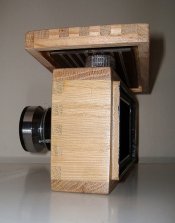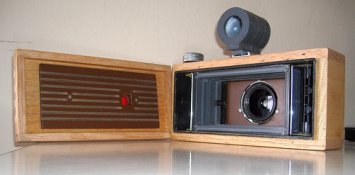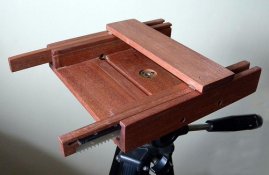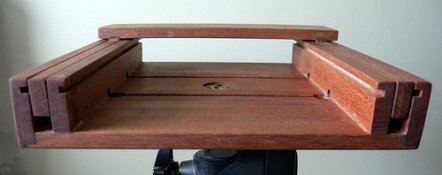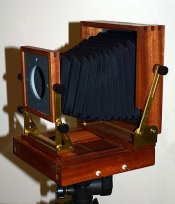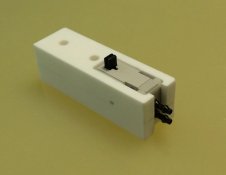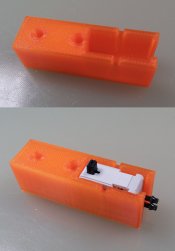Dan, I believe I did see those photos of your bellows some time ago .
My present camera only has "half of a bellows", that is a single sheet clamped to the body on the periphery, and clamped in a nut on the shutter thread on the other.
I made it from a composite of iron-on wet suit repair patch on the outside and Protostar flocking on the inside.
I had 2 concerns. One that it was not completely opaque, when viewing a 500 W tungsten , there was a deep red glow coming through. ( although it did not fog Fuji 160)
The second problem was that it was not quite flexible or conformable enough. So I stretched it to destruction, when the fibre of the wetsuit repair fabric let go before the telescope flocking.
( Edit error, it was the flocking that failed with radial cracks)
So the next trial is to be of the thick black plastic that Ilford paper comes in, sandwiched to the flocking with a hot iron.
I want to try to somehow pre-shape it to have a bowler hat shape.
Perhaps in the oven while wife is away...
My present camera only has "half of a bellows", that is a single sheet clamped to the body on the periphery, and clamped in a nut on the shutter thread on the other.
I made it from a composite of iron-on wet suit repair patch on the outside and Protostar flocking on the inside.
I had 2 concerns. One that it was not completely opaque, when viewing a 500 W tungsten , there was a deep red glow coming through. ( although it did not fog Fuji 160)
The second problem was that it was not quite flexible or conformable enough. So I stretched it to destruction, when the fibre of the wetsuit repair fabric let go before the telescope flocking.
( Edit error, it was the flocking that failed with radial cracks)
So the next trial is to be of the thick black plastic that Ilford paper comes in, sandwiched to the flocking with a hot iron.
I want to try to somehow pre-shape it to have a bowler hat shape.
Perhaps in the oven while wife is away...
Last edited by a moderator:


